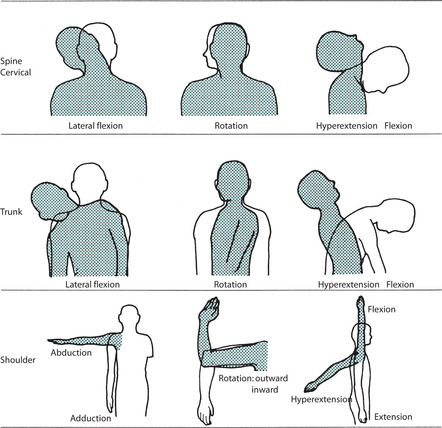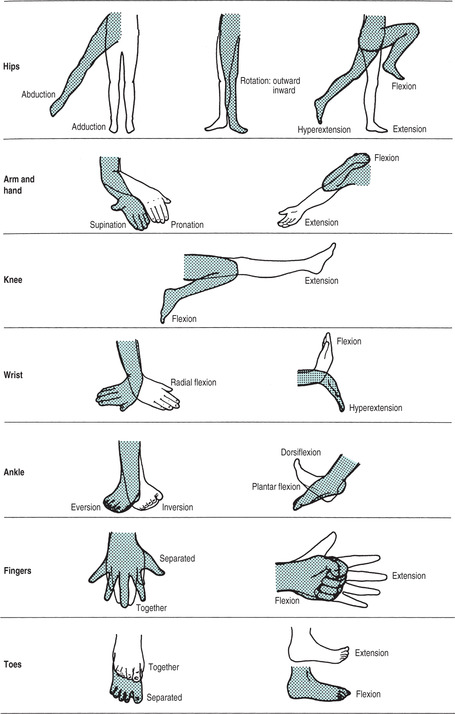Learning outcomes
By the end of this section, you should know how to:
▪ prepare the patient for this nursing practice
▪ carry out active and passive exercises.
Background knowledge required
Revision of the anatomy and physiology of the musculoskeletal system.
Indications and rationale for active and passive exercises
Active and passive exercises (Fig. 16.1) are muscle and joint movements carried out to assist circulation, maintain muscle tone and prevent the development of joint contracture. These exercises can be performed by the patient (active) or by the nurse or carer helping the patient (passive), and are indicated:
▪ following an anaesthetic or surgery
▪ during a period of reduced mobility such as bed-rest
▪ during prolonged inactivity resulting from the effects of disease or trauma.
 |
 |
| FIGURE 16.1Passive (assisted) exercises for the bed-fast patient: spine, cervical; trunk; shoulder; hips; arm and hand; knee; wrist; ankle; fingers; toesFrom Roper et al 1985, with permission |
 Equipment
EquipmentIt may be necessary to include safety equipment, for example bed sides, to prevent a bed-fast patient falling out of bed during passive exercises.
 Guidelines and rationale for this nursing practice
Guidelines and rationale for this nursing practiceThese guidelines could be used by the nurse to teach a patient’s carer(s) to become involved in this practice.




▪ explain the nursing practice to the patient to gain consent and co-operation
Stay updated, free articles. Join our Telegram channel

Full access? Get Clinical Tree


